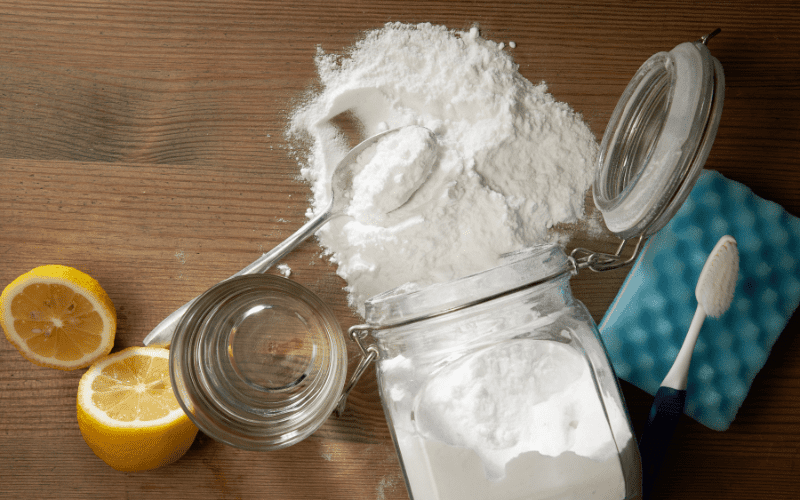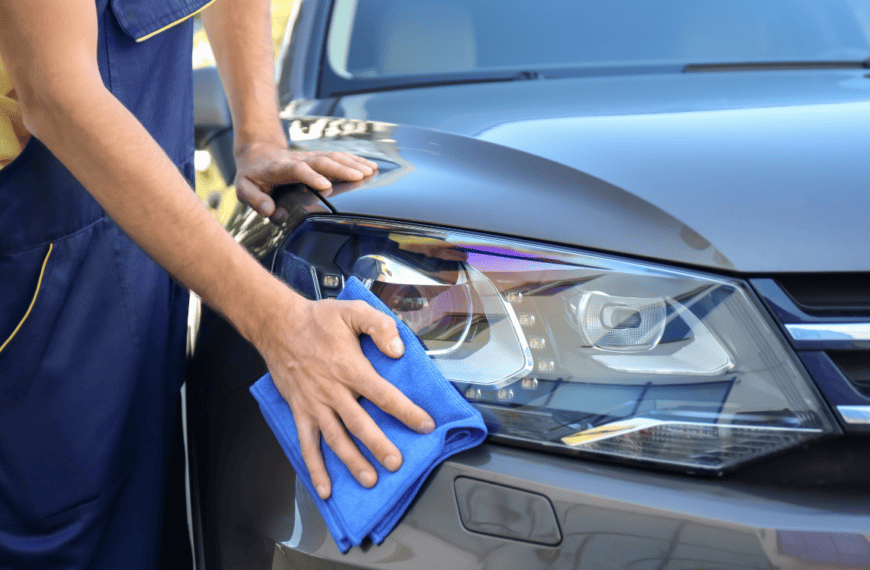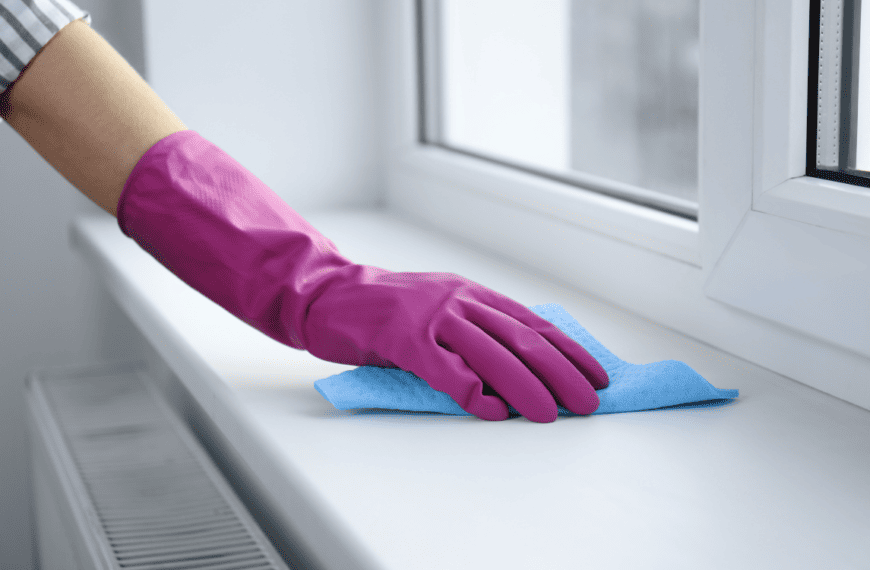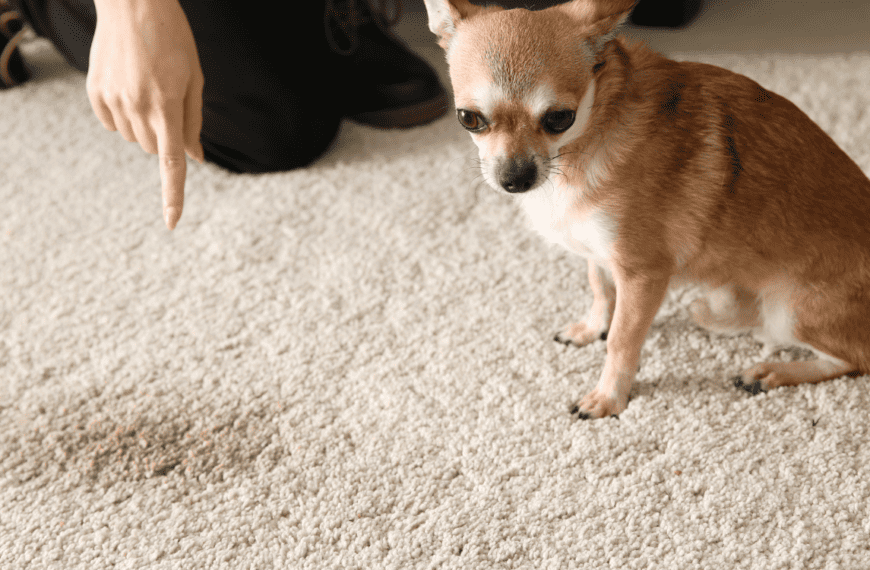Vinegar, or acetic acid, makes an excellent household cleaner. Vinegar works to eliminate odors, remove mineral buildup from soap scum, get rid of sticky spills and dirt, and can even dissolve grease. Unlike commercial cleaning products, vinegar lacks abrasive and toxic chemicals, making it less harsh on surfaces and skin.
You can easily make an all-purpose vinegar cleaning solution for surfaces by diluting it with water. You can also mix vinegar with household ingredients like flour or baking soda to make a paste for deep cleaning. Lastly, mixing vinegar with olive oil creates a polishing cleaner for metal and wood. Whichever solution you use, cleaning with vinegar is easy and quick.
How to Make Vinegar Cleaning Solutions
The easiest way to make a vinegar cleaning solution is to combine one part vinegar and three parts water in a spray bottle. This all-purpose vinegar cleaner is great for removing dirt, smudges, and streaks on most smooth surfaces.
While there are several ways to make a vinegar cleaning solution, some mixtures work better with specific cleaning tasks. Using the following solutions, you can clean and polish just about any surface in your home.
All-Purpose Cleaner for Hard Surfaces
An all-purpose vinegar cleaning solution can be used on smooth surfaces like stovetops, tiles, countertops, appliances, and glass. A diluted vinegar solution is also great for cleaning the inside of your microwave when put in a bowl and microwaved for several minutes.
Make sure you don’t use vinegar to clean marble or natural stone countertops, as it could leave a permanent mark.
Ingredients:
- 1 part distilled white vinegar (or apple cider vinegar)
- 3 parts distilled water (or tap water)
- 1 part lemon juice (for disinfectant and cutting odor)
- 1 part rubbing alcohol (for glass cleaner)
Step 1: Put Distilled Vinegar in a Spray Bottle
To start, add 1 part vinegar to a spray bottle. Distilled white vinegar is often the best cleaning vinegar but other kinds also work.
Undiluted vinegar spray is great for tough stains like mineral deposits and soap scum on shower walls, bathroom countertops, tile surfaces, and other bathroom surfaces. Straight vinegar is also good for cleaning cutting boards. For everything else, move on to the next step.
Step 2: Add Water and Shake
Add 3 parts distilled water to the spray bottle. For example, if you put ½ cup of vinegar in the spray bottle, add 1 ½ cups of water.
Put the cap on your spray bottle and shake the vinegar and water solution before use.
Step 3: Add Lemon Juice to Disinfect Surfaces and Cut the Smell
If you want to cut the vinegar odor or increase disinfection, add 1 part lemon juice to your solution and shake well.
Lemon juice has antimicrobial properties that help to disinfect and sanitize surfaces. It also adds a fresh citrus scent which is typically preferred over an acetic acid smell.
Step 4: Add Rubbing Alcohol to Clean Glass
You can also clean glass with a vinegar solution. Mix equal parts water and rubbing alcohol plus ½ part of white vinegar in a spray bottle. Shake vigorously.
Pro Tip: Adding a couple of drops of essential oils to the mix will add a pleasant scent without leaving behind streaks on glass surfaces.
Surface Cleaners for Polishing
A vinegar solution is also great for polishing wood furniture, paneling, and flooring, or metal surfaces like stainless steel appliances.
Ingredients:
- 1 part distilled white vinegar
- 1 part olive oil
- 4 parts water (for wood flooring and paneling)
Step 1: Measure White Vinegar and Olive Oil
Measure equal parts of olive oil and white vinegar. Unless you have a large amount of polishing, ½ cup of each should be plenty.
Step 2: Put Ingredients in a Bowl and Mix Thoroughly
Put the vinegar and olive oil in a large bowl and mix thoroughly. Then, use a microfiber cloth to dab and rub the areas you want to polish.
Step 3: Add Water for Wood Paneling or Flooring
To polish and clean floors or paneling made from wood, add 4 parts warm water to your olive oil and vinegar solution and stir. Adding water ensures the acetic acid won’t dull the finish. Just in case, test a small inconspicuous area on your flooring or paneling first to avoid accidental damage.
Deep Cleaning Scrubs and Pastes
Deep-cleaning vinegar pastes are perfect for trickier cleaning jobs like removing a carpet stain, neutralizing a smelly or clogged drain, and deep-cleaning metal surfaces.
Removing Tough Carpet Stains
Ingredients:
- 1 part distilled white vinegar
- 1 part salt
- 1 part Borax (or a few drops of liquid dish soap)
Step 1: Combine Ingredients
Mix equal parts vinegar, Borax, and salt in a large bowl. A tablespoon or two of each should be plenty unless you are dealing with a large stain. If you don’t have any Borax, a couple of drops of dish soap can be substituted.
Step 2: Mix Thoroughly
Mix the ingredients until paste forms. The paste can be applied directly to the stain, left to sit, and wiped up. Just make sure to test a small indiscreet place first to ensure it doesn’t alter the color of your carpet.
Cleaning Metal Surfaces
A vinegar, salt, and flour paste makes an excellent cleaner for silver, brass, copper, pewter, and other metal surfaces.
Ingredients:
- 1 cup of vinegar
- 1 teaspoon of salt
- ¼ cup of flour
Step 1: Combine Salt and Vinegar
Mix 1 teaspoon of salt and 1 cup of vinegar in a large bowl.
Step 2: Add Flour and Stir
Add ¼ cup of flour and stir the mixture until it forms a paste.
Unclogging and Deodorizing Drains
A vinegar and baking soda mixture can eliminate odors and dislodge small clogs in drains.
Ingredients:
- ½ cup of vinegar
- ½ cup of baking soda
- Several cups of hot water (from the faucet or boiling)
Step 1: Pour Baking Soda Down the Drain
Pour ½ cup of baking soda down the drain in a circular motion.
Step 2: Add Vinegar
Next, pour ½ cup of vinegar down the drain and let sit. When it stops fizzing, pour hot or boiling water down the drain to rinse away the paste.
What Is the Best Cleaning Solution with Vinegar?
The best vinegar cleaner depends on what you are cleaning. However, white distilled vinegar and distilled water typically make the best cleaner for multi-purpose use.
What Is the Ratio of Water to Vinegar for Cleaning?
Generally, the ratio of water to vinegar for cleaning is 3:1. This recipe is less abrasive and suitable for various surfaces, but you can always make it stronger to tackle tough cleaning tasks.
How Do You Make All-Purpose Cleaner with Vinegar?
To make an all-purpose vinegar cleaner, mix three parts of water with one part of distilled white vinegar in a spray bottle. Shake well, and you’re good to go!
Is Vinegar and Water a Good Cleaning Solution?
Vinegar, or acetic acid, has antibacterial and antifungal properties, making it a great cleaning agent. When mixed with water, it is less abrasive than chemical cleaners, and you can use it to clean almost any surface in your home.









